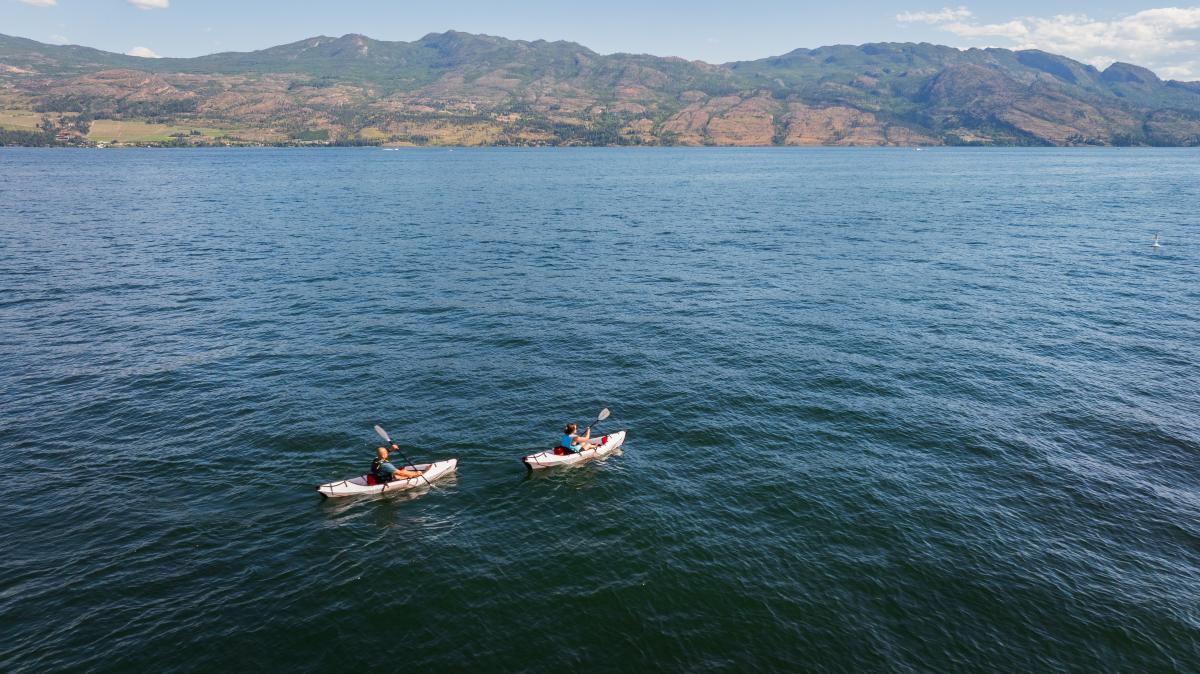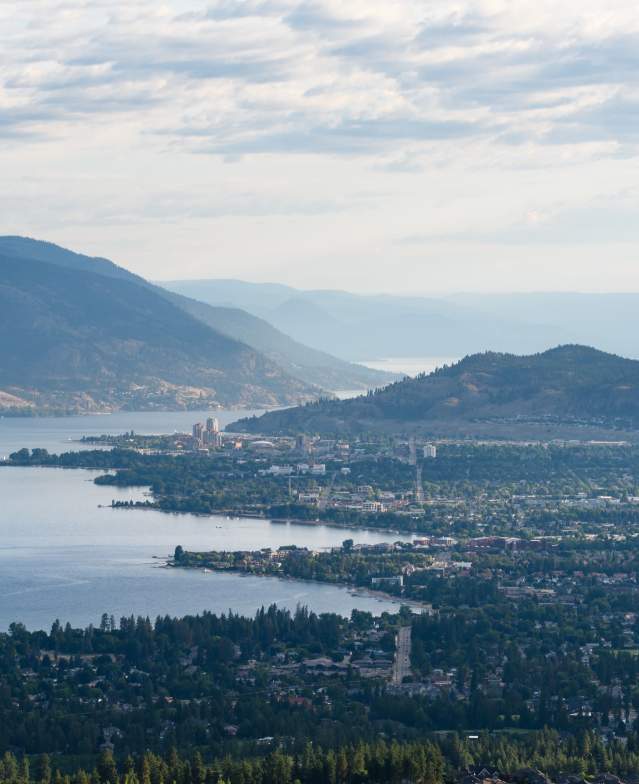Your browser is not supported for this experience.
We recommend using Chrome, Firefox, Edge, or Safari.
Kelowna sits in the heart of the Okanagan Valley, a long north–south corridor carved by ice and shaped by tectonic forces thousands of years ago. The result is a landscape of steep hillsides, fertile benches, and the deep waters of Okanagan Lake.
Okanagan Lake is a fjord lake, its basin gouged by glaciers during the last ice ages and influenced by the valley’s rift structure. Stretching about 135 kilometres, the lake plunges more than 230 metres deep, with layers of glacial sediment lying beneath. Its shoreline shifts from sandy beaches to rocky bluffs and hidden bays, creating a playground for paddling, swimming, and boating, while also moderating the region’s climate.

The valley floor is nourished by glacial deposits that left behind rich soils. This fertile ground supports orchards, vineyards, and farms that thrive in the long growing season. Visitors can taste this abundance at farms, orchards & markets or sip it in a glass at a local winery.
Surrounding mountains frame the valley and shape its weather. To the west, the Coast and Cascade ranges create a rain shadow, reducing Pacific moisture and ensuring Kelowna’s famously sunny skies. To the east, the Monashee Mountains rise sharply, their alpine slopes catching snow that feeds local streams and reservoirs. This interplay of ranges is key to the valley’s four-season climate.
Ecosystems here are remarkably diverse. Sagebrush grasslands and ponderosa pine forests stretch across the hillsides, while wetlands, creeks, and alpine meadows provide habitat for an array of species. You might spot osprey or bald eagles soaring above the lake, or deer browsing along wooded trails. Exploring local trails is one of the best ways to connect with this rich natural world.
Kelowna’s geography is more than scenery—it shapes how people live, explore, and enjoy the region. The lake inspires time on the water, the mountains invite year-round adventure, and the valley floor provides the bounty that fills markets, restaurants, and glasses across the city.





